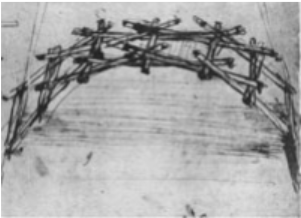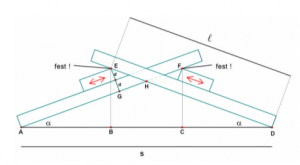Leonardo Bridge
Thanks to the Italian sculptor and art collector at the Spanish court of Philip II, Pompeo Leoni (1533–1608), the artistic and scientific estate of the outstanding Renaissance artist and scientist Leonardo da Vinci (1452–1519), collected in the so-called Codex Atlanticus, has been preserved to this day. This codex, which is kept in the Ambrosian Library in Milan, also contains some drawings with which Leonardo constructed an extraordinary bridge. The “Leonardo Bridge” is composed exclusively of boards, without these being connected by means of dowels, screws, nails, ropes or glue. Of course, the individual boards are shorter than the obstacle to be spanned — a river, for example.





